Authenticity & the False Self
April 2, 2013 § 37 Comments
“No one man can, for any considerable time, wear one face to himself, and another to the multitude, without finally getting bewildered as to which is the true one.” ~ Nathaniel Hawthorne
“To be nobody but myself—in a world which is doing its best, night and day, to make me somebody else—means to fight the hardest battle any human can fight, and never stop fighting. ~ e.e. cummings
“The privilege of a lifetime is to become who you truly are.” – C.G. Jung
 In 1944 Helen Deutsch—notably, the first psychoanalyst to specialize in women’s psychology—coined the term the “as if” self.
In 1944 Helen Deutsch—notably, the first psychoanalyst to specialize in women’s psychology—coined the term the “as if” self.
This concept was expanded upon and called the “false self” by D. W. Wincott in 1960. “Other people’s expectations can become of overriding importance,” Wincott noted, “overlaying or contradicting the original sense of self, the one connected to the very roots of one’s being.” (“Our Need for Others.”)
The idea of a false personality construct being distinct from one’s essential, authentic nature dates back over 3000 years: in the Bahgavad Gita, Ego (or Ahamkara) is described as the body-identified sense of self which is disconnected from the true soul.
 “According to the Gita,” notes Ramnath Subramanian “there is a fundamental difference between ‘real’ ego and what it defines as the ‘false’ ego. Real ego is our very essence, the consciousness that makes us aware and awake to reality. The false ego is a false identity crafted to preserve the sense of being the most significant and the most important all the time. In short, it is a narcissistic search for being loved, validated and appreciated.(“The Bhagavad Gita and the Problem of the Ego,” Huffington Post.)”
“According to the Gita,” notes Ramnath Subramanian “there is a fundamental difference between ‘real’ ego and what it defines as the ‘false’ ego. Real ego is our very essence, the consciousness that makes us aware and awake to reality. The false ego is a false identity crafted to preserve the sense of being the most significant and the most important all the time. In short, it is a narcissistic search for being loved, validated and appreciated.(“The Bhagavad Gita and the Problem of the Ego,” Huffington Post.)”
The Bhagavad Gita asserts that the Ahamkara (ego) must be removed for true fulfillment to be achieved.
“We all need an ability to mask or control our baser emotions so that we don’t blurt them out inappropriately where they can get us into trouble,” explains Dr. Tain Dayton in “Creating a False Self: Learning to Live a Lie.” “The real danger lies not in creating a mask or false self, we all do that somewhat. The danger lies in mistaking the false or idealized self for the true self.
“A false self because it is an unconscious defense, can stifle the growth of a conscious, authentic self. It’s the false self that strategizes and develops strength, confidence and acceptance. And the true, conscious self gets suffocated and sent into hiding.”
One surefire way to distinguish one’s core center from the egoic personality structure or false self is meditation, in which we cultivate what has been called “the witnessing self.” Meditation asks the practitioner to become conscious of when one is thinking, which really just means becoming aware of when one is talking to oneself internally.
In our everyday Western life, a constant inner monologue for us has become like breathing. We identify with our thoughts to the point where the statement “I am not my thoughts,” however factually correct, feels somewhat radical when taken to heart.
Yet the meditation practitioner soon finds moments, however fleeting, when the inner dialogue is stilled and mental silence is achieved. Anyone who has ever experienced this will tell you that this moment feels very much like making contact with one’s true being—which, according to mystical traditions the world over, it is.
“Based on the philosophy of [the ancient Hindu texts] the Upanishads,” details Neera Kashyap in “Personal Growth & The Witnessing Mind,” [we are taught] that if we could witness our thoughts and emotions, we would discover that what is witnessed  is not our essential nature, but an ever-changing flux of our mind’s desires and tendencies.
is not our essential nature, but an ever-changing flux of our mind’s desires and tendencies.
“By practicing witness consciousness, we can distance ourselves from our chameleon-like mental tendencies. [This way] we observe our world, but simultaneously also absorb the detachment, power and impartiality of our anchor, the witnessing mind.
“Anchored, we observe,” continues Neera. “Anchored, we inquire into the origins of our thoughts and emotions, and the problems that arise from them. Anchored, we see them rise, take form, and ultimately merge into the witness. The thoughts, emotions, and problems are transformed, by their mergence in the silence and peace of the witness.”
“There are two birds, two sweet friends, who dwell on the self-same tree. One eats the fruits of the tree, and the other looks on in silence.”
“This verse from the Upanishad,” notes Neera Kashyap, “sums up the secret of abiding happiness, in our lives. We enjoy the fullness of life, yet simultaneously witness this participation silently. This seems essential, when we consider the next verse of this Upanishad, in which the imagery is further developed.
“The active bird is overcome by sadness at her unceasing and unwise partaking of life. However, when she beholds on the same tree the eternal power and glory of the other bird, the witnessing spirit, she is freed from sorrow. For she sees that between herself and the other bird, there is a fundamental identity.”
Wincott prescribed what he called “play”—anything that brings out spontaneous aliveness, from art to sports to meaningful conversation—as a way to revive contact with the authentic self.
 There is no doubt that self-acceptance is also key.
There is no doubt that self-acceptance is also key.
“When we’re self-accepting,” elaborates Leon F. Seltzer, Ph.D. in “Evolution of the Self, “we’re able to embrace all facets of ourselves—not just the positive, more ‘esteem-able’ parts. As such, self-acceptance is unconditional, free of any qualification.
“We can recognize our weaknesses, limitations, and foibles, but this awareness in no way interferes with our ability to fully accept ourselves…Perhaps more than anything else, cultivating self-acceptance requires that we develop more self-compassion.”
It can be hard in a world that values success, perfection and positivity to accept our failures, flaws and darkness, but ultimately, in order to touch the authenticity within ourselves we seek—ironically!—-accepting the aspects of ourselves which we like least is the first step to unleashing that part we like best.
What are your thoughts on authenticity, identity and the false self?
The Emerging Study of Intuition
March 5, 2013 § 12 Comments
“Cease trying to work everything out with your minds. It will get you nowhere. Live by intuition and inspiration and let your whole life be Revelation”. ~ Eileen Caddy
“The only real valuable thing is intuition”. ~ Albert Einstein
Studies and anecdotes alike suggest that we have ways of gaining information beyond that which is readily available to our conscious mind. The word intuition comes from the Latin word intueri, which translates as to look inside or to contemplate.
Psychology Today relates an experiment wherein the subject is shown images which are either calming or agitating (an image of a lake, an image of a spider…) The order is randomly generated in the moment by a computer.
Electrodes that measure tiny changes in skin resistance are attached to two fingers on the subject’s left hand; plus, a third that monitors blood flow. Consistent with other test subjects, the body does not react to calming images, but does show response to the agitating ones. In this groundbreaking experiment, researchers discovered that the subject’s body reacts to the agitating image a fraction of a second before the image has been randomly generated.
I’ll give that a minute to sink in.
Implications of nonlinear time aside—which are, in themselves, awe-inspiring—this study suggests concrete proof that “gut reactions” are a genuine function of human processing.
“Today, cognitive science is revealing a fascinating unconscious mind that Freud never told us about,” notes David G. Myers in The Powers & Perils of Intuition. “Thinking occurs not onstage but offstage, out of sight. Studies of automatic processing, subliminal priming, implicit memory, heuristics, right-brain processing, instant emotions, nonverbal communication and creativity unveil our intuitive capacities. Thinking, memory and attitude operate on two levels: the conscious/deliberate and the unconscious/automatic. ‘Dual processing,’ researchers call it. We know more than we know we know.”
“The scientific evidence is now stronger than ever for commonly reported experiences such as telepathy (mind-to-mind communication), clairvoyance (information received from a distant place) and precognition (information received from a distant time),” observes psychologist Dean Radin. “Studies suggest that we have ways of gaining information that bypass the ordinary senses.”
This acknowledgement extends even to the United States Navy, who, The New York Times reports, has started a program to investigate how members of the military can be trained to improve their intuitive ability during combat and other missions.
“The idea for the project comes in large part from the testimony of troops in Iraq and Afghanistan who have reported an unexplained feeling of danger just before they encountered an enemy attack or ran into an improvised explosive device, Navy scientists said.
“’Research in human pattern recognition and decision-making suggest that there is a ‘sixth sense’ through which humans can detect and act on unique patterns without consciously and intentionally analyzing them,” the Office of Naval Research said in an announcement late last month,” citing numerous peer-reviewed studies in cognitive psychology and neuroscience.
The New York Times notes that people often “confuse” the concept of intuition with the supernatural—though many intuitive types would more likely call this a difference in perspective.
Whatever your personal beliefs as to the source of intuition, its existence is embraced by the world’s most celebrated thinkers. In Einstein and the Poet: In Search of the Cosmic Man, William Hermanns shares a conversation with the man whose name is literally a synonym for genius:
“Einstein nodded: he was a good listener. After a pause he said, ‘The cosmic man must be restored, the whole man who is made in the image and likeness of the arch-force, which you may call God. This man thinks with his heart and not with party dogma. As I’ve explained before, there is an order in the universe – a cosmic order – and humans have the possibility of understanding these laws.’
“Einstein leaned back in his chair; so did I, putting my writing pad on my knees. He added, ‘I have no doubt that the allies will win the war.’ I smiled, ‘Oh, you are my prophet again. ‘Prophet or not,’ he scratched his head, ‘what I say is more often felt through intuition than thought through intellect.'” (Einstien’s Intuition.)
It’s important, however, to remain discerning, and not to assume that every strong feeling we receive is operating on some higher, interconnected plane.
As David G. Myers points out in The Powers & Perils of Intuition, “The history of science tells story after story of challenges to human intuition. To our ancestors, the sun’s daily travels had at least two plausible explanations: Either the sun was circling Earth, or Earth was spinning while the sun stood still. Intuition preferred the first explanation. Galileo’s scientific observations demanded the second.”
It’s also possible to confuse the strong emotion of desire (wishful thinking) with the strong feeling of a potential “gut reaction.” We must always check our guts—and analyze our motives—first and foremost for self-deception.
“The first principle,” said Einstein’s fellow physicist, Richard Feynman, “is that you must not fool yourself—and you are the easiest person to fool.”
“Nobody can dictate my behavior,” said Diana, Princess of Wales, in her last interview before her fatal accident. “I work through instinct, and instinct is my best counselor.”
“Does this mean we should ignore our hunches or intuitions?” asks Denise Cummins Ph.D in “Good Thinking.”
“Not necessarily. According to Dr. Daniel Kahneman, decisions are the output of two processes, a fast intuition- or emotion-based process and a slower, deliberative one. To Kahneman, intuitive activities are very similar to perceptual activities, such as seeing and hearing.
“Ask yourself this: When you glimpse something out of the corner of your eye, what do you normally do next? You probably direct your attention to the new stimulus, allowing your visual system to process it in more detail. As it turns out, that is probably the best way to think about the role of intuition in decision-making: Your gut reaction tells you this particular choice deserves further deliberation.”
 Cummins also sites an experiment by Dr. Michel Tuan Pham of Columbia Business School, which asked people to make a number of future predictions, from box office success to presidential elections. The findings indicated that people did better in fields with which they already had some knowledge. But also, those who believed in their ability more, made more accurate predictions. This was dubbed “the emotional oracle effect.”
Cummins also sites an experiment by Dr. Michel Tuan Pham of Columbia Business School, which asked people to make a number of future predictions, from box office success to presidential elections. The findings indicated that people did better in fields with which they already had some knowledge. But also, those who believed in their ability more, made more accurate predictions. This was dubbed “the emotional oracle effect.”
So how to cultivate your intuition? For one, start listening to that still, small voice. Like a muscle, it benefits from excercise. Make feeling-based predictions privately to yourself, which can be proven later. This way you can begin to get an idea of what your most successful hunches felt like in their nascent stages—as well as build confidence and trust in your abilities, thereby employing the benefits of that documented “emotional oracle effect.”
Remember, the subliminal self operates on a far subtler level than we may be used to paying attention to or even noticing.
Meditation—simply giving yourself time to cultivate inner stillness—helps quiet the mind and open receptivity to subconscious knowledge.
Paying attention to how your body responds to certain situations or people can tell you a lot.
 Visualization exercises can be helpful as well. They give the subconscious mind a device with which it can present you with communication from its arsenal of symbolic wisdom.
Visualization exercises can be helpful as well. They give the subconscious mind a device with which it can present you with communication from its arsenal of symbolic wisdom.
Try imagining yourself in a beautiful, calming natural environment. Take the time to really bring the sights and sounds of your inner space to life. Once this has been achieved, take a little more time simply to enjoy your creation.
Then imagine a treasure chest in this scene. Ask a question. In your mind’s eye, walk over to the chest and open it. The subconscious will present you with an answering image. It may be clear or obscure symbolism, but more often than not you will find the image that appears carries metaphorical weight and is not random.
Have fun tapping into that buried treasure!
Navigating The Dark Night of the Soul
October 30, 2012 § 18 Comments
By Tai Carmen “The night sea journey takes you back to your primordial self, not the heroic self that burns out and falls to judgment, but to your original self, yourself as a sea of possibility, your greater and deeper being.” ~ Thomas Moor
“The night sea journey takes you back to your primordial self, not the heroic self that burns out and falls to judgment, but to your original self, yourself as a sea of possibility, your greater and deeper being.” ~ Thomas Moor
“There is no coming to consciousness without pain. People will do anything, no matter how absurd, to avoid facing their own soul. One does not become enlightened by imagining figures of light, but by making the darkness conscious.” ~ Carl Jung
“Fear is a natural reaction to moving closer to the truth” ~ Pema Chödrön
So named after St. John of the Cross’ classic religious poem of the same title, the dark night of the soul is described by seekers of all mystical traditions as an important stage of the quest for deeper knowledge — as unavoidable as confronting the dragon who guards the treasure in every mythic hero’s story.
“The mythological goal of the dragon fight is almost always the virgin, the captive, or more generally, the ‘treasure hard to attain.’ This image of the vulnerable, beautiful, and enchanting woman, guarded by and captive of a menacing monster gives us a picture of the inner core of the personality and its surrounding defenses,” relates Donald Kalsched in Myth & Psyche.
The maiden or treasure on the other side of the dragon symbolize our own inner wealth or spirit, awaiting reunion with the conscious mind, guarded by the ego and shadow-side aspects of the personality.
“Only one who has risked the fight with the dragon,” notes the great Swiss psychiatrist Carl Jung, “and is not overcome by it wins the hoard, the ‘treasure hard to attain’. . . . he has faced the dark ground of his self and thereby gained himself.”
In myth and life alike, when the seeker first sets out upon the path, it is often not by choice but by necessity. To live in denial of the call simply becomes unbearable. Many times transformation is triggered by a crisis of meaning, forcing a reassessment of values and priorities.
Increased awareness shines a light on dark corners of the personality and/or the world at large. So the dark night period is really a sign that transformation is occurring — the labor pains of personal rebirth.
If processed, all who have undergone the dark night of the soul agree that it is ultimately a doorway to deeper awareness and understanding. On the other side awaits a more authentic self and a broader concept of the world. But in the meantime the false constructs and denied aspects of self become increasingly uncomfortable, even painful, giving the impression that something awful is happening, when, in fact, this period can be seen as nature’s way of encouraging regeneration — as a snake’s partly shed skin irks and itches him until he rubs the husk off entirely.
Because of his powerful ability to shed old layers of himslef, mystical traditions the world over associate the snake with transformation and regeneration.
Jesus had his forty days in the desert, Jonah his time in the belly of the whale. In Star Wars, when Luke Skywalker asks Yoda what he will encounter in his first test, the mini master replies: “Only what you take with you.”
“Everyone carries a shadow,” Jung wrote, “and the less it is embodied in the individual’s conscious life, the blacker and denser it is.” In other words, the more we deny it, the more power the shadow self has over us.
“The Shadow is an archetype—a universal motif or image built in to all human beings. You can no more get rid of this inner Shadow than you can avoid casting an outer shadow when you’re in sunlight. For most of us, that creates a problem, because the Shadow appears as the sum total of the weakest, most flawed, inferior or even disgusting parts of yourself. It’s everything you don’t wish to be, but fear that you are.” (“The Tools” by Phil Stutz.)
When one is experiencing a dark night of the soul, one inevitably comes face to face with one’s shadow side.
“Most of us do not take these situations as teachings,” says Zen monk and author Pema Chödrön. “We automatically hate them. We run like crazy. We use all kinds of ways to escape — all addictions stem from this moment when we meet our edge and we just can’t stand it. We feel we have to soften it, pad it with something, and we become addicted to whatever it is that seems to ease the pain.”
Continues Chödrön,”It’s a transformative experience to simply pause instead of immediately trying to fill up the space. By waiting, we begin to connect with fundamental restlessness as well as fundamental spaciousness.” By spaciousness, Chödron means the vast calm available to us in the “inner space” of turning inward in meditation and conscious presence. (For more on third eye meditations and inner space travel see “The Art of Seeing: Third Eye Perception and the Mystical Gaze”).
“It takes a long time to learn to listen to the still, small voice within,” notes Psychology Today writer Wendy Lustbader. “We tend to seek direction outside ourselves, while our soul’s language is drowned out by the commotion of day-to-day doings, all the external strivings that distract us.
“It is possible to lose awareness of this inner voice for years and to be carried along by the force of society’s dictates and other people’s conceptions of a worthy life. At any point in the lifespan, suffering makes our need to hear what is within acute.”
“We see our Shadow as a source of humiliation that we try to hide—usually through some kind of perfectionism,” explains Phil Stutz. “The counter-intuitive truth is that when we reveal the Shadow… its nature changes. It becomes a source of creativity and confidence.”
This is because it has been noted by students of the psyche, and Jung in particular, that, as psychologist Ken Page puts it: “Our deepest wounds surround our greatest gifts.” Continues Page, “Cervantes said that reading a translation is like viewing a tapestry from the back. That’s what it’s like when we try to understand our deepest struggles without honoring the gifts that fuel them.”
“Core gifts are not the same as talents or skills,” continues Page. “In fact, until we understand them, they often feel like shameful weaknesses, or as parts of ourselves too vulnerable to expose.” He gives examples of a client who feels she is “too much,” whose core gift is passion. Another who feels he is “not enough,” whose core gift is humility.
“Yet [these vulnerable parts of ourselves] are where our soul lives…” Page observes. “But gifts aren’t hall-passes to happiness. They get us into trouble again and again. We become most defensive-or most naïve-around them. They challenge us and the people we care about. They ask more of us than we want to give. And we can be devastated when we feel them betrayed or rejected…”
“Since the heat of our core is so hard to handle,” details Page, “we protect ourselves by moving further out from the center. Each ring outward represents a more airbrushed version of ourselves. Each makes us feel safer, puts us at less risk of embarrassment, failure, and rejection. Yet, each ring outward also moves us one step further from our soul, our authenticity, and our sense of meaning…
“So, most of us set up shop at a point where we are close enough to be warmed by our gifts, but far enough away that we do not get burned by their fire. We create safer versions of ourselves to enable us to get through our lives without having to face the existential risk of our core.” (“How Our Insecurities Can Reveal Our Deepest Gifts”).
Considering these angles, it becomes easier to see how the symbolic dragon of the shadow side protects our greatest riches, and how shining a light on our darkness is one time-tested way to liberate the luminous gold of our authentic self.
The only way out is through. Once we begin to see the value in our shadow aspects and dark night periods — whether it’s a dark night day, month or year — we can learn to stop resisting the discomfort and surrender to the process, to view it as an initiation, a transition. If we view every aspect of the journey as sacred, we are better able to glean its gifts, for behind the dark night awaits a silver dawn.
Starseeds, Cosmic Consciousness and the Galactic Generations~ Part 2
September 22, 2012 § 29 Comments
If you haven’t read Part 1 ~ CLICK HERE
“The whole universe exists inside you. Ask all from yourself.” ~Rumi
“And we, we who embody the local eyes and ears and thoughts and feelings of the cosmos, we have begun at least to wonder about our origins — star stuff contemplating the stars, organized collections of ten billion billion billion atoms, contemplating the evolution of nature, tracing that long path by which it arrived at consciousness here on the planet earth, and perhaps throughout the cosmos.” ~ Carl Sagan, Cosmos: Who Speaks For Earth
Ken Carey had been off the grid for a decade, living a simple farm life in harmony with nature, when, in a state of high fever, he penned the slim classic Starseed Transmissions in 1978. Carey’s description of the experience proceeding his dictation echoes the transpersonal state of transcendent awareness long reported by mystics:
“Everything that touched my senses, every nuance of sound and light, every object in the room felt as intimate to me as the lungs through which I breathed, as inseparable, as personal. Insights did not come as flashes but as things I had always known, truths so obvious it was hard to believe I could have forgotten them.” (The Starseed Transmissions, introduction, 1995 edition.)
The narrator identifies itself as a force that “comes from the Presence where there is no time but the eternal now,” describing itself as a member of a race of spirit beings who have been evolving alongside humanity in a parallel universe of non-form:
“We are you, yourself, in the distant past and distant future. We are you as you were, would have been and still are, had you not fallen from your original state of grace.”
The angelic messenger from the stars describes this falling from grace, not as moral corruption, but as the state of fear and disconnection humans entered as they became lost in the” materializing process,” forgetful of their spiritual counterparts and interconnected origins. In effect, the book purports to be a voice from the realm where our spirits wait, calling us home.
The narrator describes a state of harmonious connectivity in which humanity would flourish:
“In the fallen state of consciousness, each human being functions in disregard of the song of Life that is going on in others. There is no harmony, no direction, no arrangement. You are like the random notes of an orchestra before the conductor unifies the instruments in symphony. The Grand Conductor is calling everyone to attention, calling now to remembrance of unity and purpose, reminding all that the time has come to stop tuning separate instruments and begin to accept the direction of One who understands the whole.
“As you begin to pay attention to the direction of the Conductor within, you will begin to play to the rhythm of the Planetary Symphony, harmonizing with the others of your species and with all of life.” (Ken Carey’s, Starseed Transmissions.)
In many ways, Ken Carey’s Starseed Transmissions echoes Timothy Leary’s “Starseed: Transmissions from Folsem Prison,” published five years prior. Obviously, the names are similar, though it is unclear whether Carey had ever read Leary’s piece. It seems unlikely that Carey would have been exposed to Leary’s short, pamphlet-like work, as Carey was undergoing a decade long media fast on a farm in rural Missouri at the time of writing Starseed.
The central theme of both starseed works is that humanity’s destiny lies in the stars. Both imagine a future galactic human, evolved past our current point, who would ascend into the heavens and begin what both texts describe as our true quest…An image we see appearing even earlier, in 1968, in the last scene of Stanley Kubrick’s acclaimed “2001: A Space Odyssey.”
So according to Ken Carey’s angelic/extraterrestrial messenger, we are all Starseeds. We all have other worldly origins and the homesickness we feel is spiritual in nature, a longing for divine reconnection.
The primary criticisms lobbied against starseed-identified individuals is that it is escapist, and originates out of the desire to feel special. Though many starseeds keep their thoughts about their identity to themselves for that very reason, there are many who build elaborate sites detailing rank, home-world histories, etc.
Usually those who get into details of hierarchical order describe a “Galactic Federation of Light,” the “Galactic Council” or “The Ashtar Command.” Many channelers claim to be in touch with beings from other planets in our solar system, describing a leader named Sunat Kumara — details about which a surprising number of people agree. Personally, I don’t relate with these very specific renderings — but perhaps those people who do, have reason to do so.
Scott Mandelker, Ph.D. author of From Elsewhere: Being ET in America, notes “… I found that within the group of people who recognized themselves as cosmic visitors were individuals both clear and confused, humble and grandiose, active in service or passive in self absorption. Like any other group of people, I found all types — yet those who I considered a bit off-balance did not detract from the genuine reality of extraterrestrial incarnation. Even ET souls are not perfectly enlightened — and even less so when they take human form!”
Yet many “men and women…never spoke about being from such and such planet, unless somebody directly asked them. They had no need to impress anyone with rank or title… They made no big deal about being different; they were too busy teaching, writing, healing, counseling, creating, planning and organizing activities that might be of benefit totheir community.” (SOURCE)
Lately, ET culture has gone so mainstream that Katy Perry is singing pop songs about alien abduction: In “E.T.” she describes the ambiguity, fear and romantic draw surrounding this newest of cultural obsessions: “You’re so hypnotizing/Could you be the devil?/Could you be an angel?…”
The chorus is particularly troubling: “Kiss me, kiss me/Infect me with your love and/Fill me with your poison/Take me, take me/Wanna be a victim/Ready for abduction…”
While most likely just a sign that the fringe-dweller’s sci-fi fascination has reached mainstream status and is currently “on the collective mind,” many find the weird romanticization of abduction propaganda-esque.
Predator/prey imagery, featuring wild carnivores chasing and consuming defenseless herbivores, are spliced in among eroticized alien-human relations, resulting in Perry appearing, in the last scene, with goat-legs. She is also notably featured as a romanticized Gray alien being flung through the far reaches of the cosmos, imploring Kanye West, playing an alien, to “take her, infect her with his poison, abduct her,” etc.
Perhaps the somewhat grotesque portrayal of cosmic themes in videos like Perry’s is due, less to nefarious connections, and more to the inevitable sensationalism and debasement of consumer-based production.
However, imagery like this, combined with the perceived onslaught of alien invasion films in the past decade, have many wondering if they are being brainwashed or desensitized in preparation for a coming ET event. There are numerous online sites dedicated to keeping an eye on the progress of this theory.
It is possible that both the creepy, conspiracy “alien agenda” angle and the love-based-starseed-in-service-to-the-planet slant are two sides of the same coin. Perhaps the love-based starseeds have come in special numbers at this time as a line of defense. But it’s easy to get lost in labyrinthian conspiracy theories…
Panning back from this micro-focus, we see that it is not so odd that we should be culturally obsessed with our identities in relation to the larger galactic picture…
We are the first waves of humans, that we know of, to have come of age in an era where space travel is a natural part of life, and images of our place in the universe, via Hubble Telescope photography, is available for everyone to see.
Whether or not you believe the surrounding mythos, it seems significant that sites like www.starseed.net has 7000 + members; www.ashtarcommandcrew.net boasts a community of over 10,000 members! The shared goals of those identifying with this burgeoning movement of cosmic consciousness is consistently transformational in nature. All feel innately within the core of their being that we live in a time of great change, great potential and certainly, also, danger — though it is the possibility upon which most choose to focus their energies.
People associated with transformational culture invariably feel that they have a mission to be of service to the planet at this time. Inevitably there is a call towards compassion, justice, harmony, community, freedom, self-expression, environmental awareness, personal growth, the presence of the divine within all things and the connectedness of all humanity. Whether these worthy goals are fulfilled, or remain intentions only, the inspiration behind them seems culturally progressive.
Whether these galactic generations feel the affinities they do because their souls are truly extraterrestrial, or because the stark gap between their ideals and the reality of the world makes them feel alien to modern culture, seems less important than the fact that this is a genuine, far-reaching movement with apparently positive ideals.
In many ways cosmic language has replaced religious terminology. People will say “one with the Universe” in the same way that they used to say “one with God;” terms like “universal love” replace phrases like “God’s love.” This is just semantics. Understandably, many in the cosmic generations feel the word God has been abused in the name of unloving principals. In these cases, secular language feels more fresh and personal, but it is no less mystical a statement to assert one’s connection with the universe, particularly when most mystical traditions agree that God is within all.
On a personal note, as a child I had never heard of “star children” or “starseeds,” yet I felt instinctively that I was from elsewhere and that I was on a mission. As a small child of three or four, I reportedly said to my mother: “I don’t look like myself.” “What do you look like?” she asked me. “Like this,” and I stretched my eyes to look bigger & more slanted. (Feeling that one does not look “as one should,” or that aspects of the world do not appear as they ought—such as the sky being the wrong color—are recurring themes among the starseed type, as reported by Mandelker.)
I also saw a UFO as a child, in broad daylight; a slim silver disc, which appeared not horizontal but upright and emitted a beautiful rainbow contrail. The sighting was serendipitous, as I only saw it fly over my head because I had slipped on a rock. I’ve had other paranormal experiences throughout my life — clairvoyance, seeing energy and auras. So in light of this, I do find this subject — which I can easily imagine seeming totally “out there” for many people — fascinating.
Whatever the details, we find ourselves now in a unique position: the first series of human generations to grow up knowing what our galaxy looks like; knowing there are more galaxies than grains of sand in all the worlds beaches, and as many possible worlds. We feel ourselves in the growing pains of transforming from what humans have been, to all we seek to become.
Starseeds, Cosmic Consciousness and the Galactic Generations ~ Part 1
August 11, 2012 § 22 Comments
Some part of our being knows this is where we came from. We long to return. And we can. Because the cosmos is also within us. We’re made of star-stuff. We are a way for the cosmos to know itself. ~ Carl Sagan
We are stardust ~ billion year old carbon. We are golden ~ caught in the devil’s bargain. And we’ve got to get ourselves back to the garden. ~ Joni Mitchell
Long before man went to the moon, he looked up at the stars and pondered his place in the cosmos.
Many a soul has looked up to the shimmering panorama of the night sky and felt a kinship, perhaps with a certain star or constellation. Many experience a sense of longing, as if some key to their existence might be hidden there.
It’s not just a poetic line. In a very real way we are made of stardust.
All the elements necessary to create life — carbon, nitrogen, iron, to name a few–were first forged in the nuclear furnace of a stellar explosion. And so every atom in the human body came, originally, from a dying star, propelled outward into the universe.
Countless books, movies, songs and legends reflect our sense of kinship with these burning bodies of celestial light, so seemingly different from our own bodies of flesh and bone…From radio hits about being “all made of stars” to Native American oral traditions, which describe human origins and helpers from the heavens.
In the past century, we have witnessed a renaissance of human thought, now aided by the information age. At the same time, we have seen an incredible amount of bloodshed and suffering. Is it getting better or getting worse? Apocalyptic prophesies abound. But so does talk of an awakening.
Over the past half century, connected with this idea of awakening, the terms “Starseed,” “Starborn,” and “Star Children” have become a part of the fringe cultural dialogue.
The idea has formed within this multi-generational conversation that some souls are “not from here.” Many mystically inclined would argue that none of us are spiritually “from here,” and the starseed concept is compatible with this idea. The theory goes that these souls, the starseeds, have incarnated more often in other solar systems; that earth is not their home planet.
According to Scott Mandleker, Ph.D., author of From Elsewhere: Being ET in America, recurring themes among starseed identified individuals include feeling alien to contemporary human culture; disconnection from, and even disgust with, accepted norms…a deep spiritual longing and the sense that, not only is there more to life than meets the eye, but that they have a mission to fulfill. The word “mission” seems to be a trigger word for starseeds almost without exception. Many have had extra-dimensional or ESP encounters, which have affirmed their sense of differentness and sensitivity.
There is usually a strong connection with nature and the stars, an interest in space, science fiction, other worlds, ancient cultures, environmentalism and human potential…perhaps even homesickness for a place they’ve never known in this life.
Many starseeds feel they have chosen to forget their other worldly origins in order to grow up on human terms and blend into the culture — though most feel the intention was to eventually “wake up” to their true calling as paradigm-pushers and ‘spiritual beings having a human experience,’ (as the Pierre Teilhard de Chardin quote goes.)
Though in some rare cases, starseeds feel they’ve been exiled to earth, the majority feel their intergalactic mission stems from the compassionate desire to help nudge humanity onto the path of its destined awakening.
Starseeds, without fail, intuit the civilizations from which they’ve come have moved beyond earth’s current state of divisive turmoil into a phase beyond war, disconnection and bloodshed. For this reason, starseeds invariably find themselves looking to serve humanity, choosing vocations which center around healing, teaching, human potential, the arts, environmental assistance and social outreach.
Most feel their own path of awakening, their spiritual journey, is of utmost importance in order to truly live the new paradigm they wish to exemplify.
Though the stuff of science fiction, and many would say wishful thinking, the phenomenon has been felt by so many isolated individuals, unprompted — only later to be united by a website, a conversation, or a book — that it truly deserves some investigation by the open minded among us. And it could be science fiction itself is a product of productive starseed types, exploring inner worlds which lead them inevitably to worlds beyond their own.
The most common take on this intuitive knowledge is that these interstellar souls have come as artists, visionaries, dreamers and pioneers of thought to assist in humanity’s impending rebirth, to act as midwives through the inevitable labor pains.
Psychedelic icon Timothy Leary may have been the first to use the word “Starseed” in his short work, “Starseed: Transmissions from Folsom Prison.”
He penned “Starseeed” while serving time on charges of marijuana possession, for which he was issued a 95 year sentence — an unheard of amount of time for the crime committed. While officially held on drug charges, at the hearing the judge remarked: “If he is allowed to travel freely, he will speak publicly and spread his ideas.” (Jesse Walker, “The Acid Guru’s Long Strange Trip.”)
President Richard Nixon had earlier labeled Leary “the most dangerous man in America.” (“Tim Leary, Pied Piper of Psychedelic 60’s.”) To have the president of the United States call a pacifist author-philosopher by this title should tell you something about the repressive state of affairs in which free thinkers find themselves.
Yet the irrepressible psychedelic spiritualist continued his work from jail, writing in 1973:
“This signal is being transmitted from a cell in Folsom Prison, which is the Black Hole of American society […] Some cosmologists suggest that Black Holes […] may be passageways to another universe, just as the manholes in Paris lead to a world beneath the street. Well, the maximum security prision is a fine place from which to scane the universe […]
“Out here, beyond good and evil, one sees America in pain, injured nervous systems propelling robot-bodies in repitiuous, aimless motion along paths labeled rights and wrong…”
Yet Leary remained fiery with optimism:
“The entire universe is gently, rhythmically, joyously vibrating. Cosmic intercourse. This is a message of hope and interstellar love from the Black Hole. Irrepressible optimism. Yes, it is true that repressive pessimists now control planetary politics. This is a larval phase.”
At this time, Leary had begun receiving what he believed were telepathic messages from outer space, presumably the genesis for “Starseed.” He began to see man’s true means of spiritual transcendence as coming from the stars:
“[…].certainly the anticipation of ‘saucers’ transporting humanoid bodies is naive. It is more likely that extra-planetary contact will be received by the instrument which was designed over three and a half billion years ago to pick up electro-magnetic vibrations. The human nervous system itself […]
“This message of neurological resonance can be censored, imprisoned but cannot be crushed because it comes from within, from the DNA nucleus inside each cell, from the evolving nervous system. The Higher Intelligence has already stepped on planet earth and its script is writ within our bodies, emerging in every generation.” ( Click this link to read the full piece online.)
(He did end up getting an early release, after five years, and resumed his energetic career, this time with emphasis on man’s place within the cosmos.)
To take the Starseed Test, click here! (Normally, I don’t put much stock in these test, but this is a good one, composed by licensed psychologist Scott Mandleker, author of From Elsewhere: Being ET in America, which we’ll examine in the next installment of the Parallax starseed series.)
The Love Pill: Future Brave New Drug of the Masses?
May 12, 2012 § 28 Comments
“The warm, the richly colored, the infinitely friendly world of soma-holiday. How kind, how good-looking, how delightfully amusing every one was! […] Swallowing half an hour before closing time, that second dose of soma had raised a quite impenetrable wall between the actual universe and their minds.”
~ Aldous Huxley, Brave New World
You may soon be able to get a prescription for falling in love.
A team of Oxford researchers are working on a pill to recreate the feeling of being in the honeymoon stage. They aim to accomplish this by combining pheromones, testosterone (to up sex drive,) Oxytocin and Vasopressin — naturally occurring “bonding chemicals” produced by the body at the early stages of a relationship — CRH (a hormone that induces the fear of separation) and Entactogens, a “feel good” drug similar to MDMA.
There you have it folks, the recipe for love: one part sex, another part bonding, mix in the fear of separation and some ecstasy. Or so the Oxford research team is hoping.
While the love pill might seem to many like the absurd and even chilling culmination of a cultural trajectory best left to science fiction, others wonder if perhaps it might not have some therapeutic effect.
Take for instance the success researchers have had with treating Post Traumatic Shock with MDMA (known for its street name, ecstasy.) According to Science Daily, “participants treated with a combination of MDMA and psychotherapy saw clinically and statistically significant improvements in their PTSD — over 80% of the trial group no longer met the diagnostic criteria for PTSD, stipulated in the Diagnostic and Statistical Manual of Mental Disorders IV (DSM-IV-TR) following the trial, compared to only 25% of the placebo group. In addition, all three subjects who reported being unable to work due to PTSD were able to return to work following treatment with MDMA.”
Likewise, psychologists like Harvard researcher Richard Doblin have long been interested in the empathy enhancing effects of MDMA for possible use in marriage counseling. Though the 1986 criminalization of the drug has hampered such investigation, there has been renewed interest on this front in the past few years.
The theory goes that breakthroughs in communication and emotional vulnerability could be stimulated by this kind of neurochemical enhancement in a therapy situation.
But where do we draw the line when tinkering with brain chemistry? Is happiness more important than authenticity? Judging from the statistics — one in ten Americans is currently taking antidepressants — it would appear the answer for many is yes.
In their paper, Neuroenhancement of Love and Marriage: The Chemicals Between Us, the scientists researching the new love pill suggest:
“Even if love were not authentic, authenticity is not an overriding or exclusive value. People can trade a degree of authenticity for other values in their lives.”
And somewhere Aldous Huxley is rolling over in his grave.
Huxley penned the classic and increasingly prophetic dystopian novel, Brave New World, in 1931, about a future society imprisoned by their own addiction to escapism. A key medium of escape: soma, a drug of the future masses.
Huxley creates the vision of an overmedicated society, wherein, as author Neil Postman puts it: people have “come to love their oppression, to adore the technologies that undo their capacities to think.”
In comparing Huxley’s Brave New World with the famous dystopian novel 1984 by George Orwell, Postman notes:
“What Orwell feared were those who would ban books. What Huxley feared was that there would be no reason to ban a book, for there would be no one who wanted to read one. Orwell feared those who would deprive us of information. Huxley feared those who would give us so much that we would be reduced to passivity and egoism.
“Orwell feared that the truth would be concealed from us. Huxley feared the truth would be drowned in a sea of irrelevance. Orwell feared we would become a captive culture. Huxley feared we would become a trivial culture.”
The propagandized phrase “A gram is better than a damn” floats around Huxley’s world and people routinely check out for “holidays” via pharmaceutical enhancement:
“I don’t understand anything,” she said with decision, determined to preserve her incomprehension intact. “Nothing. Least of all,” she continued in another tone “why you don’t take soma when you have these dreadful ideas of yours. You’d forget all about them. And instead of feeling miserable, you’d be jolly. So jolly.” (Brave New World.)
Of course, people have been hawking love potions for time immemorial, and it hasn’t worked yet. But with science on their side, today’s researchers might be the first to create a true love drug.
There is something about seeing the same thing — the face of your beloved, for instance — over and over again, which creates a kind of automatic pilot of the mind. It seems that often the more we see something, the less we see it. Consciously grounding oneself in the moment can help. But to create a way to see our partners with fresh eyes could indeed have a revitalizing effect on stalled relationships.
Still, the Huxlian implications have this author wondering what kind of pain could be repressed, what kind of problems ignored, with the help of such a pill. We touch fire, it hurts, we withdraw our hand. What would happen if we anesthetized that hand? We might wind up playing with fire until our hand fell off.
Take this metaphor to the emotional level. Pain is our body’s natural warning mechanism, telling us that something is wrong, indicating a need for change. If we simply synthetically engineer our chemicals to send us messages that everything is wonderful when, in reality, it is not, the danger of losing touch with one’s natural sense of truth — for choosing self-deception over needed change — seems great.
And if a feeling of connection can be artificially induced, what true breakthroughs — which would require, perhaps, facing unpleasant truths — could remain unplumbed in a relationship? To me, it seems like a recipe for arresting growth, both in the individual and the relationship.
But in a society where many people would rather be happy than authentic, and most women would rather look young than real — there could be a true market for the love pill.
 My authenticity, and all the feelings which go along with it, is important to me. My feelings, both good and bad, guide me like a compass, and tell me when I’m languishing in some un-constructive headspace or circumstance by increasing emotional pain, like a warning. Like most artists — and I’d wager to guess, most people — I have my ups and downs. But my “downs” mean something to me, as much as my “ups.” Coming through a bad time, I always feel like I have managed to change something awry in myself or my life. Something I wouldn’t have been forced to address if I had synthetically induced the sensation of feeling better.
My authenticity, and all the feelings which go along with it, is important to me. My feelings, both good and bad, guide me like a compass, and tell me when I’m languishing in some un-constructive headspace or circumstance by increasing emotional pain, like a warning. Like most artists — and I’d wager to guess, most people — I have my ups and downs. But my “downs” mean something to me, as much as my “ups.” Coming through a bad time, I always feel like I have managed to change something awry in myself or my life. Something I wouldn’t have been forced to address if I had synthetically induced the sensation of feeling better.
I know these statements are considered controversial by some. When I suggested in The Politics of Normalcy that the dominance and commonplace usage of anti-anxiety medication in today’s culture was perhaps depriving us of the important philosophical journey of facing our existential angst head-on, I received a deluge of comments — some hostile — suggesting that I simply didn’t understand what it was like for those seriously crippled by anxiety.
It’s a personal choice for each, certainly. But my (admittedly self-assigned) job here at Parallax is to investigate cultural trends and their implication across the wider historical backdrop of mankind’s journey, and the truth is, these pharmaceutical developments are incredibly new. It’s only prudent to discuss all angles.
I don’t mean to imply that taking medication is equivalent to a lobotomy. Obviously, a slight boost in serotonin doesn’t change a person’s essential values. But the whole idea that we are chemically “fixing” a problem when we “normalize” a person’s neurochemistry contains language which, to me, is a red flag. What is normal? Someone who is happy working nine hours a day? Interesting. Who does that equation benefit?
Could it be the machine of society? That Prozac makes for happy worker bees, while discontent citizens brew rebellion?
My concern is that in a future where love and happiness can both be artificially induced, we make ourselves incredibly vulnerable to becoming a society like Huxley’s Brave New World. The subliminal message seems to be: Why change your life when you can just change your chemistry? Why change the world when you can just change how you feel about it?
What do you think?
Rites of Spring: Rituals of Renewal
April 8, 2012 § 6 Comments
That men may rise on stepping stones of their dead selves to higher things.
The Spring Equinox — when the sun lines up with the earth’s equator — is rich with rituals of renewal, and marks the first day of Spring for those who live in the Northern Hemisphere.
There are two days each year when the daytime and nighttime hours are approximately equal — each being 12 hours long. One occurs between March 19 and 21 (the Spring or Vernal Equinox) and the other in September. These dates have strong ties to religious celebrations throughout the world.
“The Christian Easter is destined to fall roughly around the same time as the Pagan Easter [vernal equinox] due to its association to the Judaic Passover [marking the liberation of the Jewish people from Egyptian bondage] which is also fixed by the lunar cycle,” Andy Paciorek explains in Strange Lands.
“Both festivals could be said to reflect new life, either Christ’s return from the dead or the blossom and birth of Spring. So it was not much of a stretch for the ascending Christian Church to merge both festivals. This is known as ‘assimilation’ and was a habit frequently employed in those times … to ease and encourage rather than force the conversion of heathens. ”
The modern English term Easter can be traced back to the ancient pagan goddess, Ēostre for whom the German month of April is named. Eostre represents the sunrise, springtime, fertility, and new life, as do her symbols — hares and eggs. Hares because of their plentiful reproductive capacity, and eggs because all life starts with an egg. And so the tradition of eggs and rabbits as symbols of Easter is rooted in emblems of European folklore.
“The Easter Bunny is not actually a ‘bunny’ or rabbit at all, but is actually a hare,” details Andy Paciorek. “The hare was the sacred animal of Eostre (or Oestra or Ostera), the ancient Teutonic Goddess of the Spring Moon. At the time of the vernal equinox (March or April) the hares are famed for going ‘mad’…”
“The association of rabbits, hares, and the moon can be found in numerous cultures the world over,” notes Terri Windig in “The Symbolism of Rabbits and Hares,” “ranging from Japan to Mexico, from Indonesia to the British Isles. Whereas in Western folklore we refer to the ‘Man in the Moon,’ the ‘Hare (or Rabbit) in the Moon’ is a more familiar symbol in other societies.
“In Chinese folklore, female hares conceive through the touch of the full moon’s light (without the need of impregnation by the male), or by crossing water by moonlight, or licking moonlight from a male hare’s fur. Figures of hares or white rabbits are commonly found at Chinese Moon Festivals, where they represent longevity, fertility, and the feminine power of yin.”
In Iran the Spring Equinox is celebrated with Nowruz — known as “the Persian new year” and meaning “new day.”
As with Passover, house cleaning is a part of the preparation, stemming from the old belief that cleanliness helps keep evil away (quite sensible.) On the day of Nowruz everyone dons new clothes and families visit one another. Along with other symbolic items, such as sprouted barley representing rebirth, painted eggs signifying fertility and abundance are prominent in Nowruz traditions.
Hindus celebrate the Spring festival of Holi, known as the Festival of Colors, at the end of the winter season, on the last full moon day of the lunar month (February/March).
Marked by bright colors evoking springtime and fresh life, Holi has roots in Hindu mythology associated with good triumphing over evil. Social caste taboos are relaxed, joy and mischief are encouraged, and no one expects polite behavior. The rich and the poor, the young and the old, women and men all celebrate in the streets together, dousing one another with water and colored dyes.
“Taking the superstitions and rituals of the spring festivals as psychological symbols, we can appreciate the importance of personal renewal,” muses Jonathan Young in his article “Symbolism of Spring.”
“Putting on new clothing could represent the possibility of developing a new aspect of identity or finding a fresh sense of purpose. Spring might well be the appropriate moment to don new clothes, in a figurative sense, and claim an underused side of ourselves. A personal ritual for this month could be deciding what crops we want to develop in our lives so that we have a flourishing summer ahead.”
In Winter, we cocoon. We hibernate; dream. Symbolically, in Winter we gestate, go inward — a metaphorical death. In Spring, new life sprouts forth from the dormant earth and we are reminded of our own capacity to bloom.
What bulbs have been dreaming in the dark earth of your subconscious? What behaviors do you want to shed like winter runoff? What creative, personal or spiritual fruits would you like to bare in the upcoming year?







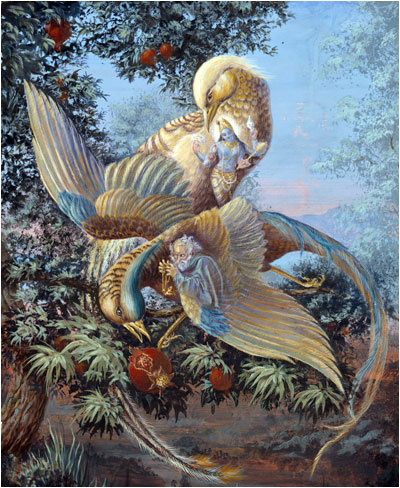





















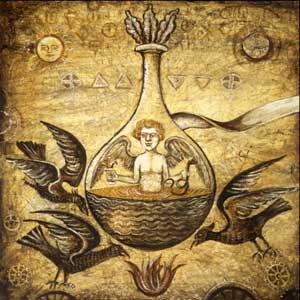



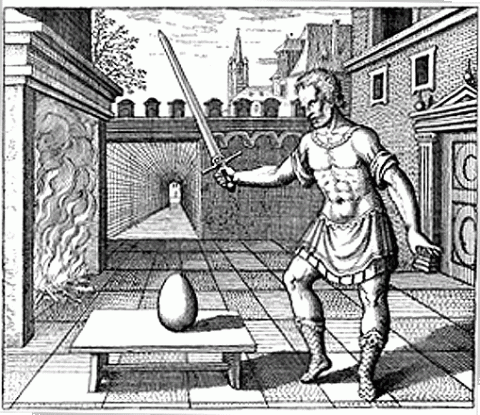








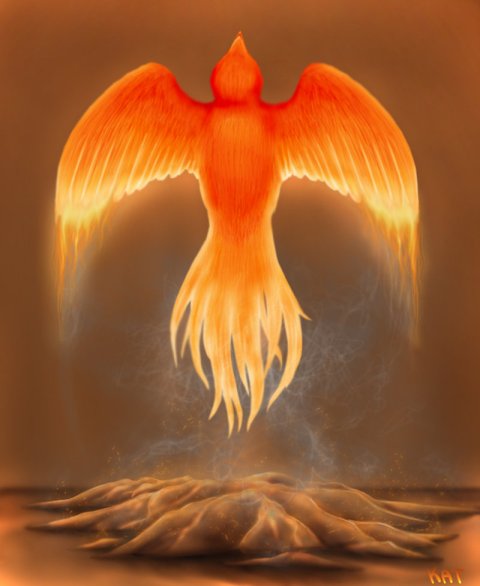
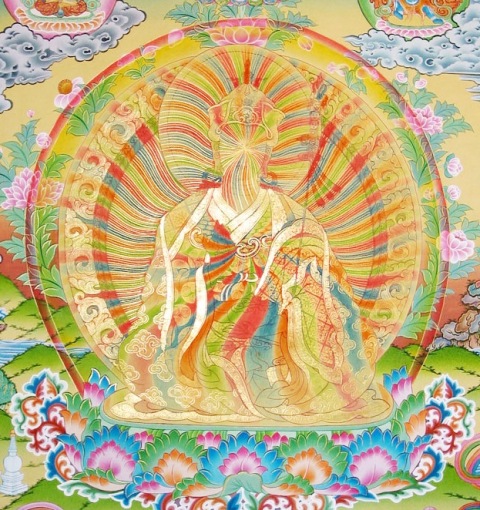










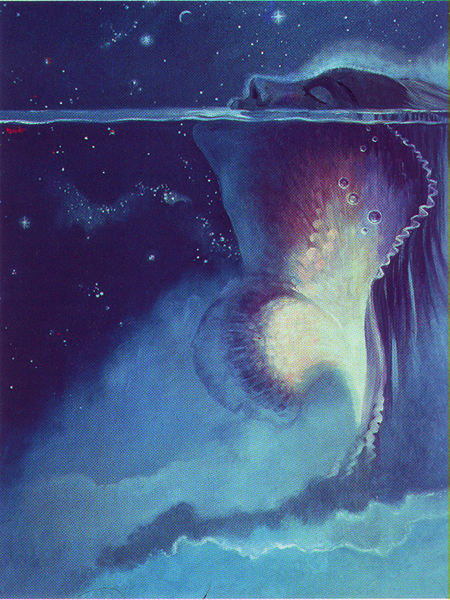


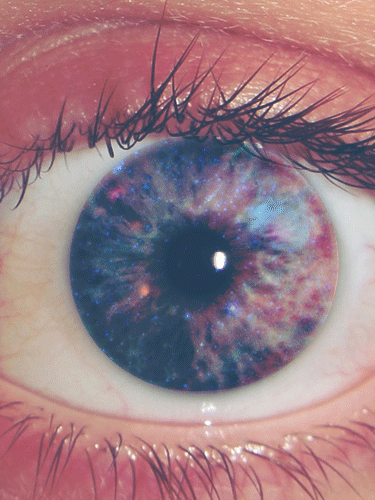





















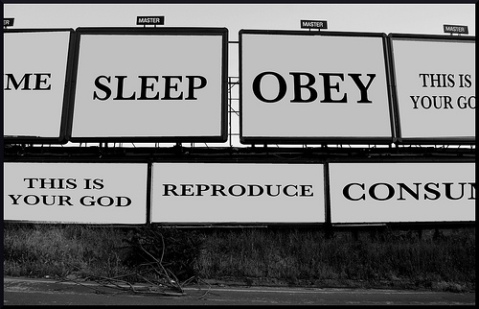

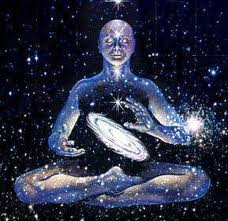




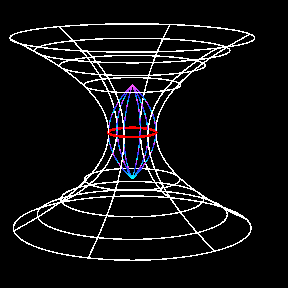
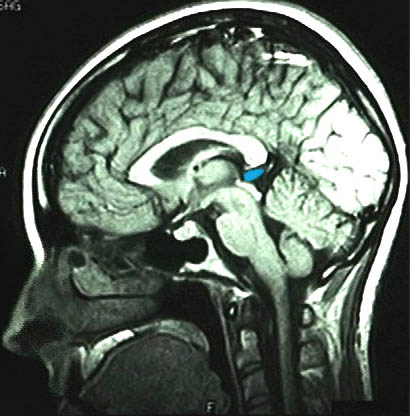
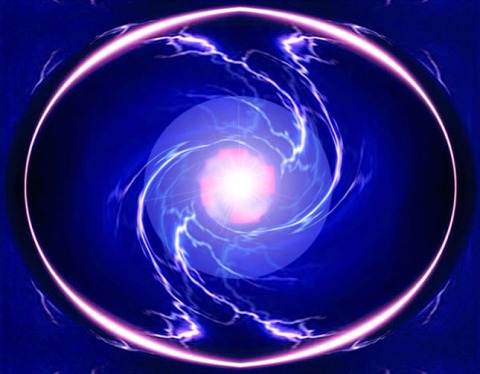
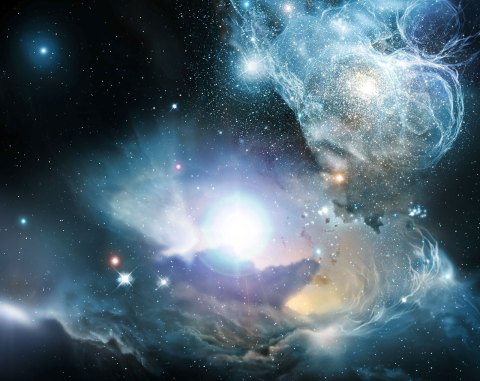

















Transformation, Destruction & The Inner Apocalypse
December 21, 2012 § 10 Comments
“Apocalypse does not point to a fiery Armageddon but to the fact that our ignorance and our complacency are coming to an end. Our divided, schizophrenic worldview, with no mythology adequate to coordinate our conscious and unconscious — that is what is coming to an end.” ~ Joseph Campbell, Thou Art That
“If there is an Armegeddon it is within each of us.” ~ Robert Ghost Wolf
I write on the eve of the Mayan Apocalypse, Dec 21st 2012 — a date they are calling “the most anticipated date in history,” which has been gaining power and momentum in the collective mythic imagination for literally decades.
2012 has become a cultural phenomenon, far exceeding any basis in Mayan history, expressing, rather, our own collective sense of dread — that we are heading for destruction, and change of a radical nature is needed if we are to survive.
Archeologist, anthropologist and author Michael D. Coe was perhaps the first to put forth an apocalyptic interpretations of the ancient Mayan codices, writing in his 1966 book The Maya:
“There is a suggestion … that Armageddon would overtake the degenerate peoples of the world and all creation on the final day of the 13th [b’ak’tun]. Thus … our present universe [would] be annihilated [in December 2012] when the Great Cycle of the Long Count reaches completion.”
Since then, apocalyptic prophecies have proliferated exponentially, leading up to the fervor of the 2012 phenomenon. The film industry has capitalized off this fear/trend with a mounting plethora of apocalyptic and post-apocalyptic movies. Post-apocalyptic video games like Fallout abound. New Age bookstores are exploding with 2012 material. Youtube features a veritable frenzy of 2012 videos…
Yet actual modern day Maya and Mayan scholars insist that the end of the ancient calender simply signifies the end of an era, known as the thirteen ba’kt’un (each ba’kt’un being equivalent to 394.26 years.) It is the end of an age of man, what the Maya called the fourth world.
Ricardo Cajas, president of the Colectivo de Organizaciones Indígenas de Guatemala, states that the date does not represent an end of humanity, but of a new cycle, which “supposes changes in human consciousness.”
According to a diverse group of indigenous peoples’ creation myths, from Mexico to New Zealand, there have been three failed worlds before our current age (could these legends refer to lost continents such as Plato’s Atlantis?).
The Hindus believe that earth goes through four world cycles, or ages of man, which repeat indefinitely. Most interpreters of Hindu scriptures believe that earth is currently in a Kali Yuga cycle, a dark time marked by destruction and degeneration in human values, known as “the age of the demon” or the “age of vice.” Eventually, the Kali Yuga will evolve into three more cycles, each one improving, until we reach a Golden Age.
“We Hopi believe that the human race has passed through three different worlds and life ways since the beginning,” details Hopi Elder Dan Evehema. “At the end of each prior world, human life has been purified or punished by the Great Spirit, or Massau, due mainly to corruption, greed and turning away from the Great Spirit’s teachings. The last great destruction was the flood which destroyed all but a few faithful ones who asked and received a permission from the Great Spirit to live with Him in this new land.”
“Modern man is out of balance because he lives in a left-brain dominated society,” asserts the Hopi elder, “leading to imbalance and conflict, and ultimately to destruction.”
We find ourselves in a runaway culture of technological advancement, where authentic human connection –to the earth and one another — threatens to be left behind. Isolation and distraction abound. As Daniel Pinchbeck, author of Breaking Open the Head, says, “We live in a culture where everything tastes good but nothing satisfies.”
Violent outbursts, like the recent tragic Sandy Hook Elementary School massacre and the stabbing of 20 school children in China — bizarrely, on the same day — create a disquieting atmosphere of building tension and mounting darkness. It’s as though we are experiencing a dark night of the world soul.
“A dark night of the soul,” writes Erin Reese in her post of the same name, “primarily occurs when the old self-image is ready to go. This is the outdated identification of who you think you are – the ego structure. When the self-image becomes calcified in any way, a dark night of the soul comes rumbling in like storm clouds.” (For more, check out Parallax’s Navigating the Dark Night of the Soul.)
Astrologically Pluto and Uranus have been, and continue to be, influential.
“Uranus represents change, invention, revolution, and higher awareness,” details astrologer Jamie Partridge. “It’s effect is shocking, unpredictable, and erratic. Pluto represents globalization, destruction, transformation, and renewal. It’s effect is grinding, ruthless and extreme. Both of these planets are distinctly non-personal and emotionless, yet their effect is dramatic and deeply felt. The square is the most challenging of the planetary aspects, representing tests and challenges. It’s effect is stressful and frustrating.”
I wouldn’t include an astrological analysis if I hadn’t felt the truth of these interpretations in my own life. So many people in my life tell me they feel it too: that 2012 was one of their most intense, full years. Many have had very hard years, while others have had intensely wonderful years. Most of us have had a mixed bag of extreme highs and lows. Few people found 2012 to be “just another year.”
And so the 2012 phenomenon, the so-called Mayan Apocalypse, can be seen as an expression of our personal and collective discomfort with old existing structures and outmoded patterns of behavior. When Dec. 21st comes and goes and the world remains in all it’s chaos, we will be left with the anti-climatic but significant realization that there is no escaping ourselves.
Let’s die to the past through this inner apocalypse — harness the intense energy of this time and use it for personal rebirth and transformation. We are collectively craving it. But it can only start with each of us, individually, and it can only take place in the present, right now.